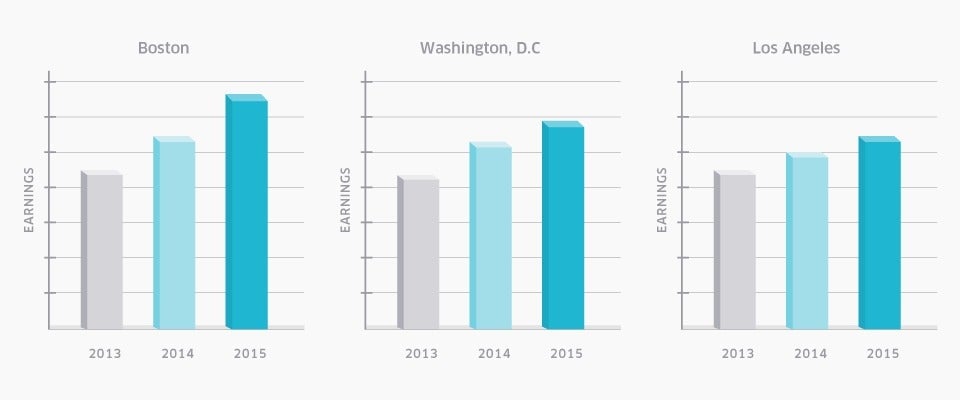Uber has quietly abandoned its sweeping January price cuts
The final numbers aren’t yet in, but as of mid-December, Uber was on pace to lose an unprecedented $3 billion in 2016. Even for a company that’s raised $13 billion and is valued at $68 billion, that’s a lot of money. Uber burned at least $1.3 billion—and probably a good bit more—in the first half of last year, plus another $800 million in the third quarter. Those losses came despite the company’s sale of its China business in August, the end of a fight that was costing Uber $1 billion a year.


The final numbers aren’t yet in, but as of mid-December, Uber was on pace to lose an unprecedented $3 billion in 2016. Even for a company that’s raised $13 billion and is valued at $68 billion, that’s a lot of money. Uber burned at least $1.3 billion—and probably a good bit more—in the first half of last year, plus another $800 million in the third quarter. Those losses came despite the company’s sale of its China business in August, the end of a fight that was costing Uber $1 billion a year.
This year, Uber needs to get those losses under control. Even if it doesn’t pursue a rumored IPO in 2017, the company would do well to reassure investors that it can make money as fast as it spends it. And already, Uber has made one big change: For the first time in three years, it isn’t planning widespread January price cuts.
Uber has made a habit of slashing fares to greet the new year, a practice it says spurs demand during the slower winter months. In a January 2015 blog post titled ”Beating the Winter Slump—Price Cuts for Riders with Guaranteed Earnings for Drivers,” Uber announced lower rates in 48 cities. The following year, in a blog post of virtually the same name (the em-dash became a colon), the company promised price cuts in more than 100 North American cities, “to fight the January blues.”
Why all the price cuts? When Uber’s rides are cheaper, people take a lot more of them (in econ lingo, this means Uber trips are highly price elastic). Ensuring the system is flooded with trip requests helps Uber keep its drivers busy, and also makes them more efficient. The result is that Uber says hourly earnings have consistently risen in cities like Boston and Los Angeles, even as rates have fallen. Drivers might make less money per trip, but they offset that with a lot more trips per hour.

How those price cuts affect Uber’s bottom line is less clear. It’s possible the company generates more revenue by lowering its fares: Ride-hailing is a high-volume, low-margin business, so having a lot of trips can end up being quite lucrative, even if each ride isn’t. It’s also possible Uber takes a short-term hit on its January reductions so that it can bring in new customers and grow the business long-term.
Uber declined to comment on whether it makes money from price cuts, and why it’s abstaining from such cuts this year. But the implication—that the company has found other ways to beat the winter slump—suggests the eight-year-old business has finally hit maturity at home. Uber is big enough (78 million US rides in December) to be assured of its rider and driver supply without significant financial incentives.
It’s likewise telling that the first indication of Uber’s price-cut rethink came out of New York, one of the company’s oldest and most profitable markets. Last month, Uber’s New York general manager, Josh Mohrer, told drivers not to expect any more price reductions.
All in all, Uber’s January plan seems like a good one. Drivers, often short on patience with the company, will be happy to see their fares remain stable. Customers, who tend to be less attuned to Uber’s every move, likely won’t notice (unless they read this story!). Uber may be able to fatten up its margins, perhaps even reprising the first-quarter profit it booked in the US last year. And Lyft, which lost $600 million in 2016 and has historically cut January fares just to keep up, will surely be relieved to skip that particular scramble for a change.